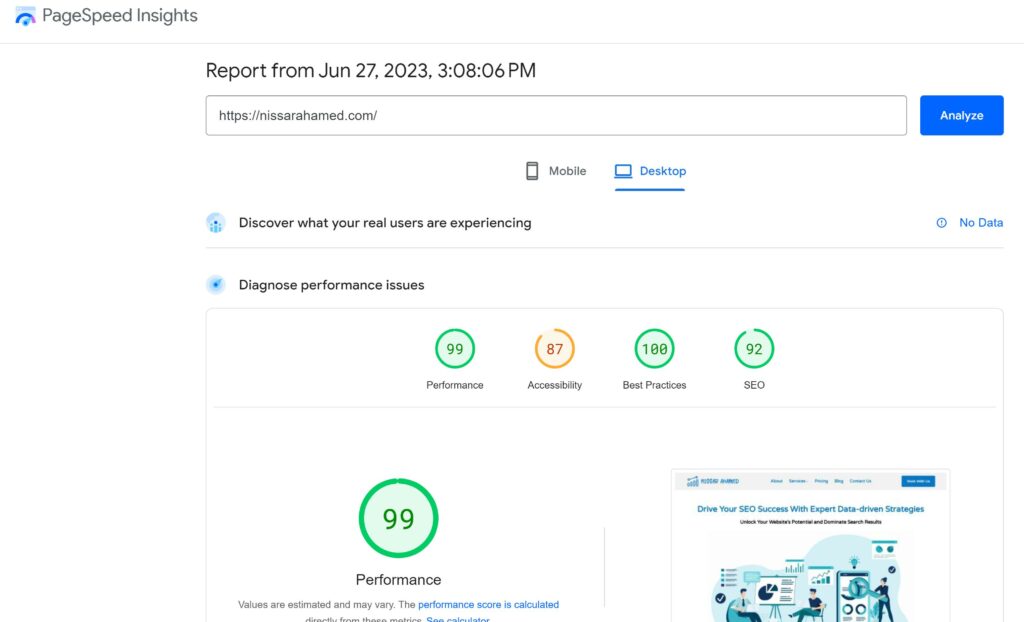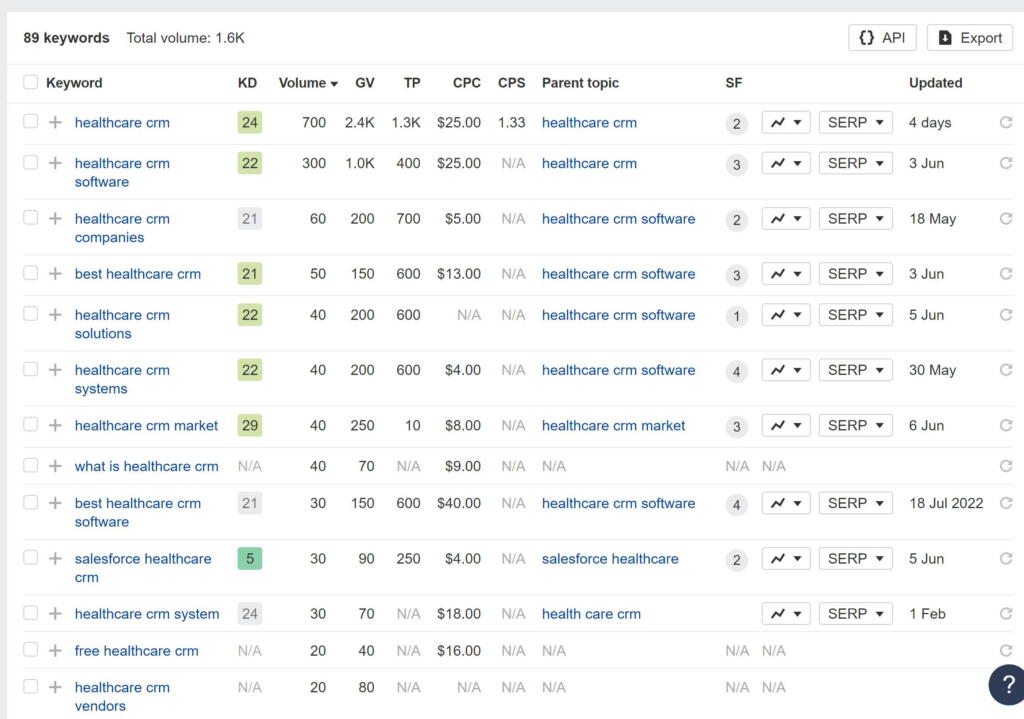Are you tired of your website getting lost in the vast online landscape? Want to boost your visibility and attract more targeted traffic? Look no further than search engine optimization (SEO).
SEO is the secret sauce that helps websites rank higher on search engine results pages. Improving certain aspects of your website, such as the meta description tags and on-page elements, can increase the likelihood of your website being displayed in search results on Google.
With effective SEO strategies, businesses can enhance their brand awareness and achieve higher conversion rates.
So, if you’re ready to conquer the digital realm and leave your competitors behind, it’s time to dive into the world of SEO. Get ready to skyrocket your online presence with powerful SEO tools and techniques.
- What is SEO?
- Importance and Benefits of SEO:
- The Role of SEO in Digital Marketing: A Comprehensive Overview
- Optimizing Website Structure for SEO
- Conducting Keyword Research for Effective SEO
- Enhancing User Experience for Better SEO Performance
- Implementing Successful SEO Strategies:
- Additional FAQs on Search Engine Optimization
- Conclusion
What is SEO?
SEO, or Search Engine Optimization, is the process by which we make changes to a website or its content to boost the chances of appearing in the search engine results pages (SERPs).
The aim is to enhance your website’s appeal to search engines in layman’s terms.
The primary purpose of SEO is to grow organic (unpaid) traffic to your website, leading to increased visibility, an influx of visitors, and, consequently, an increase in conversions or sales.
Search engines like Google utilize intricate algorithms to assess the relevance and quality of a website when a user searches for a specific keyword or term.
With SEO, you can ensure your website meets these standards, boosting its likelihood of ranking high in search results.
By refining different parts of your website, such as title tags, meta descriptions, headings, and the actual content, your chances of higher ranking and drawing more organic traffic can be significantly enhanced.
There are three main categories of SEO: on-page, off-page, and technical SEO.
- On-page SEO involves optimization strategies directly implemented on your website, like enhancing your website’s structure, boosting the quality and relevance of your content, and improving your site’s load speed.
- Off-page SEO, on the other hand, involves efforts made outside of your website, such as creating backlinks from other credible websites, social media marketing, and managing your online reputation.
- Technical SEO refers to the optimization efforts focused on the technical aspects of your website that can improve its search engine visibility and user experience. It involves measures taken to improve website speed, crawlability, mobile-friendliness, and indexability.
In a nutshell, search engine optimization plays a pivotal role in digital marketing. It assists businesses and website owners in enhancing their online visibility, drawing more targeted traffic, and ultimately realizing their business objectives.
With a solid understanding and execution of efficient SEO strategies, you can augment your website’s chances of ranking high on SERPs and drive more organic traffic your way.
Importance and Benefits of SEO:
SEO is crucial for businesses as it drives organic traffic with a high conversion potential.
In today’s digital landscape, businesses must establish a robust online presence due to the rising popularity of search engines.
By implementing effective SEO strategies, businesses can improve their visibility and attract relevant users actively searching for products or services.
Investing in SEO is an essential factor that can significantly impact a website’s success. By optimizing the website’s content and structure, businesses can increase their chances of ranking higher on search engine result pages (SERPs).
When a website appears at the top of the search results, it gains credibility and relevance in users’ eyes. This increased visibility not only drives more traffic but also enhances brand reputation.
Good SEO practices improve user experience by making websites faster, easier to navigate, and mobile-friendly. Search engines prioritize websites that provide a seamless browsing experience to users.
Businesses can enhance user satisfaction and engagement by optimizing loading speed, ensuring intuitive navigation, and creating responsive designs.
A positive user experience leads to longer visit durations, lower bounce rates, and increased chances of conversions.
One of the key benefits of implementing SEO strategies is its ability to establish credibility and trust with both users and search engines.
When a website ranks high on SERPs consistently over time, it signals reliability to search engines like Google. When determining rankings, these search engines consider factors such as backlinks from reputable sources and optimized content.
By meeting these criteria consistently through effective SEO work, websites gain trust from search engines.
Investing in SEO can provide long-term benefits by consistently driving relevant traffic to a website.
Unlike paid advertising methods that require continuous investment to maintain visibility, organic traffic generated through SEO efforts sustains itself over time without additional costs per click or impression.
This consistent flow of targeted visitors increases the likelihood of conversions while reducing dependency on paid advertising channels.
The Role of SEO in Digital Marketing: A Comprehensive Overview
The latest stats about SEO show that it continues to be a crucial aspect of digital marketing.
According to a study by BrightEdge, organic search drives 53% of all website traffic. This highlights the importance of SEO in attracting relevant users who are actively searching for products or services.
Furthermore, research by Moz reveals that the top five search results on Google receive 67.6% of all clicks. This emphasizes the significance of ranking high on search engine result pages (SERPs) to gain visibility and credibility in the eyes of users.
In terms of ROI, statistics show that SEO delivers impressive results. 70% of marketers see SEO as more effective than PPC (pay-per-click) advertising in driving sales.
These latest stats highlight the ongoing significance of SEO in driving organic traffic, enhancing user experience, and establishing credibility for businesses online.
Increasing Visibility and Driving Targeted Traffic
In digital marketing, SEO is a crucial element that boosts visibility and attracts specific website traffic. With the current competitive online environment, businesses need to make their websites easily detectable by search engines.
By optimizing various on-page and off-page elements, such as meta tags, keywords, backlinks, and site structure, SEO helps improve a website’s ranking in search engine results pages (SERPs).
When a website appears higher in the SERPs for relevant search queries, it receives more organic traffic. This is crucial because organic traffic comes from users actively searching for products or services related to the website.
By attracting these highly targeted visitors, businesses have a greater chance of converting them into customers.
Complementing Other Digital Marketing Channels
SEO complements other digital marketing channels, such as content marketing, social media marketing, and paid advertising.
While these channels can generate immediate results and provide exposure to a broader audience, they often require ongoing investments.
On the other hand, SEO focuses on long-term strategies that continue to deliver results even after initial efforts have been made.
Businesses can consistently attract organic traffic over time by optimizing a website’s content with relevant keywords and providing valuable information to users through blog posts or articles.
SEO supports social media marketing efforts by enhancing brand visibility across multiple platforms.
When users come across engaging content on social media platforms like Facebook or Twitter that links back to a business’s optimized website, it increases the chances of them visiting the site and exploring further.
Understanding User Intent through Keyword Research
One of the essential aspects of SEO is understanding user intent through keyword research.

By analyzing popular search queries related to their industry or niche, marketers gain insights into what users look for when they search online.
This knowledge allows marketers to create effective content that meets users’ needs.
By aligning the content with user intent, businesses can provide valuable information and solutions that address specific pain points or answer common questions. This helps improve the website’s visibility in search results and establishes credibility and trust with users.
Monitoring Analytics Data for Measuring Success
Monitoring analytics data is crucial for measuring the success of overall digital marketing efforts.
SEO provides valuable insights into various metrics such as organic traffic, bounce rate, conversion rate, and keyword rankings.
Regularly analyzing this data, marketers can identify trends, track progress, and make informed decisions to optimize their strategies further.
For example, suppose a particular keyword consistently drives high-quality traffic to a website but has a low conversion rate. In that case, marketers can focus on optimizing landing pages or improving call-to-action elements to enhance conversions.
Similarly, if certain pages have a high bounce rate, adjustments can be made to improve user experience and engagement.
Optimizing Website Structure for SEO
Proper website structure is crucial. By implementing technical optimizations and optimizing the structure of your website, you can enhance crawlability, improve user experience, and boost your search engine rankings.
Improved Crawlability and Indexing
One of the primary objectives of optimizing website structure is to improve crawlability.
As search engines explore a website, they navigate through links from page to page, unearthing fresh content as they go.
A well-structured website ensures that search engine bots can easily navigate through your pages and index them efficiently.
To achieve this, focus on the following elements:
- Descriptive URLs: Use clear and concise URLs that reflect the content of each web page. For example, instead of using generic URLs like “website.com/page1,” opt for descriptive absolute URLs such as “website.com/product-category/product-name.” This helps search engines understand what your page is about and improves user experience by providing meaningful information in the URL itself.
- Header Tags (H1-H6): Properly utilizing header tags helps organize your content and signals to search engines which parts are more critical. The H1 tag should be reserved for the main heading of a page, while H2-H6 tags can be used to divide subheadings or sections within the content. Remember to incorporate relevant keywords naturally within these header tags.
- Organized Navigation: A clear and organized navigation menu allows users to easily find their way around your website while aiding search engines in understanding its structure. Ensure your navigation is logical and intuitive, with clearly defined categories and subcategories.
XML Sitemaps for Discoverability
Implementing XML sitemaps is another essential aspect of optimizing website structure for SEO.
Creating a sitemap for your website is an important step to help search engines better understand the structure and content of your pages.
By listing all the pages on your site, a sitemap provides an organized and hierarchical view for search engine bots to crawl and index your site more efficiently.
By including XML sitemaps, you can:
- Ensure that all pages are discovered and indexed by search engines.
- Alert search engines to any changes or updates made on your website.
- Provide metadata such as when a page was last modified or its importance in relation to other pages.
Page Load Speed Optimization
Optimizing page load speed enhances user experience and plays a significant role in SEO.
Search engines prioritize websites that provide fast-loading pages because they offer a better experience for users.
Slow-loading websites can lead to higher bounce rates and lower search engine rankings.

To improve page load speed:
- Optimize Images: Compress images without compromising quality, use appropriate image formats, and specify image dimensions to reduce loading time.
- Minify CSS and JavaScript: Remove unnecessary characters, spaces, and comments from CSS and JavaScript files to minimize their size.
- Leverage Browser Caching: Set cache headers for static resources like CSS, JavaScript, and images so they can be stored locally on users’ devices, reducing subsequent loading times.
- Reduce Redirects (Permanent 301 or Temporary 302, or Temporary 307).
Conducting Keyword Research for Effective SEO
Keyword research plays a crucial role in optimizing your website for search engines.
By identifying relevant keywords that users are searching for in relation to your business or industry, you can tailor your content to meet their needs and improve your visibility in search engine results.
One of the primary tools used for keyword research is the Google Keyword Planner. This tool allows you to discover keywords with high search volume and low competition levels.
One way to gather important information about your target audience is by analyzing their search terms when seeking products or services like yours. This can provide valuable insights into their interests and needs.
When conducting keyword research, it is essential to consider both short-tail and long-tail keywords.
Short-tail keywords consist of one or two words and tend to have higher search volumes but also higher competition levels.
On the other hand, long-tail keywords are longer phrases that target specific user intent and capture highly relevant traffic.
While they may have lower search volumes individually, they collectively account for a significant portion of overall searches.
Analyzing keyword trends is another vital aspect of effective SEO.

By staying up-to-date with popular search terms within your industry, you can incorporate them into your content strategy and improve your chances of ranking higher in organic search results. This requires continuous analysis and adaptation as user behavior evolves over time.
Incorporating carefully selected keywords into your content helps signal to search engines what topics your website covers and improves its relevance in relation to specific searches.
However, it’s important not to overuse keywords unnaturally, as search engines may see this as spammy.
To conduct successful keyword research:
- Brainstorm a list of potential keywords in your company or industry.
- Use tools like Google Keyword Planner or other keyword research tools to identify search volumes and competition levels for each keyword.
- Focus on long-tail keywords that have lower competition but still attract a significant amount of search traffic.
- Analyze keyword trends to identify emerging topics or shifts in user behavior.
- Incorporate the selected keywords strategically into your website content, including headings, titles, meta tags, and body text.
Remember that effective keyword research is an ongoing process. Regularly monitor and update your keyword strategy based on changes in the market and user behavior.
By staying proactive and adapting to evolving search trends, you can improve your website’s authority and visibility and drive more organic traffic.
Enhancing User Experience for Better SEO Performance
Providing a seamless user experience is crucial. By optimizing website design, navigation, and mobile responsiveness, you can significantly improve your SEO performance.
Let’s explore how enhancing user experience contributes to better search engine rankings.
Optimizing Website Design and Navigation
The first step in enhancing user experience is ensuring your website design is visually appealing and easy to navigate.
A cluttered or confusing layout can frustrate users and increase bounce rates.
To create an intuitive browsing experience, consider the following:
- Clear and Intuitive Navigation: Implement a well-structured menu system that lets users quickly find the necessary information. Use descriptive labels for navigation links and organize content logically.
- User-Friendly Interface: Optimize your website’s interface by using consistent branding elements, readable fonts, and appropriate color schemes. A visually pleasing design will engage users and encourage them to explore further.

Engaging Content that Meets Users’ Needs
High-quality, engaging content plays a vital role in enhancing user experience. When visitors find relevant content that meets their needs, they are more likely to spend time on your site, reducing bounce rates.
Consider these strategies for creating compelling web content:
- Content Creation: Regularly publish fresh and informative articles, blog posts, videos, or podcasts that address topics of interest to your target audience. Great content attracts users and encourages them to share it on social media platforms.
- Rich Snippets: Incorporate rich snippets into your content whenever possible. These additional pieces of information displayed in search results provide users with quick insights into what they can expect from visiting your page.
Optimizing Page Speed for Improved User Experience
Page speed directly impacts user experience as well as search engine rankings. Slow-loading pages frustrate users and increase the likelihood of abandonment.
Improve page load times by considering the following:
- Optimized Images: Compress and resize images without compromising quality to reduce file sizes. Depending on the content, use appropriate image formats, such as JPEG or PNG.
- Caching and Content Delivery Networks (CDNs): Implement caching techniques to store static resources like images, CSS files, and JavaScript libraries. Utilize CDNs to distribute your website’s content across multiple servers globally, reducing latency for users in different regions.
Clear Call-to-Actions (CTAs) for Guiding Users
To guide users through the desired conversion funnel, it is essential to strategically implement clear call-to-actions (CTAs). These prompts encourage users to take specific actions that align with your business goals.
Consider these tips when creating effective CTAs:
- Relevant Placement: Position CTAs prominently on your web pages where they are easily visible without being intrusive. Strategic placement can guide users toward desired actions, such as signing up for an email newsletter or eventually making a purchase.
- Compelling Copy: Craft compelling copy that clearly communicates the benefits of taking action. Use action-oriented language and create a sense of urgency to motivate users to click.
You can significantly boost your SEO performance by focusing on enhancing the user experience through optimized website design, engaging content creation, improved page speed, and clear call-to-actions.
Prioritizing the needs of your users will not only improve search engine rankings but also increase visitor engagement and conversions on your website.
Implementing Successful SEO Strategies:
Conducting a thorough website audit helps identify areas for improvement regarding technical SEO, on-page optimization, and off-page factors.
To implement successful SEO strategies, it is crucial, to begin with a comprehensive website audit.
This process allows you to identify any shortcomings or areas that need improvement in your website’s technical SEO, on-page optimization, and off-page factors.
By conducting this audit, you can gain valuable insights into what aspects of your site may hinder its visibility in search engine results.
During the audit, focus on technical SEO elements such as page load speed, mobile-friendliness, and crawlability. These factors impact how search engines perceive and rank your website.
Identify any issues that may slow down your site or cause it to perform poorly on mobile devices.
Addressing these technical aspects will lay a solid foundation for your overall SEO strategy.
In addition to technical optimization, on-page optimization plays a pivotal role in improving search engine rankings.
It is crucial to produce content that is of high quality, contains relevant information, and is optimized for the intended keywords.
Conduct keyword research to understand which terms are most relevant to your business and incorporate them naturally into your content.
When crafting blog posts or other pieces of content for your website, ensure they provide value to readers while aligning with your target audience’s interests. B
y creating compelling and informative content that satisfies user intent, you increase the likelihood of attracting organic traffic and generating engagement.
Building high-quality backlinks from authoritative websites is another crucial aspect of implementing successful SEO strategies. Backlinks act as votes of confidence from other websites and signal to search engines that your site is trustworthy and valuable.
Seek opportunities to collaborate with reputable sources within your industry or niche to secure quality backlinks.
Regularly monitoring key metrics such as organic traffic, keyword rankings, bounce rates, and conversions allows for ongoing optimization.
Analyzing these metrics provides insights into the effectiveness of your SEO efforts and helps you identify areas that require further attention.
Use tools like Google Analytics to track your progress and make data-driven decisions to improve your website’s performance.
Implementing successful SEO strategies requires a combination of technical optimization, high-quality content creation, and strategic link building.
You can enhance your website’s visibility in search engine results by conducting a thorough website audit, creating valuable content, building authoritative backlinks, and monitoring key metrics.
Remember that SEO is an ongoing process that requires continuous effort and adaptation to stay ahead of the competition.
Additional FAQs on Search Engine Optimization
How Long Does It Take to See Results from SEO Efforts?
The timeline for seeing results from SEO efforts can vary depending on various factors, such as the competitiveness of keywords, topical selection, the quality of optimization, and the current state of your website.
Generally, it may take several months to start noticing significant rankings and organic traffic improvements.
Can I Do SEO Myself, or Should I Hire a Professional?
While handling basic SEO tasks yourself is possible, hiring a professional can provide valuable expertise and save you time.
Experienced professionals understand industry trends, have access to advanced tools, and can develop customized strategies tailored to your specific needs.
Is Black Hat SEO Worth Considering for Quick Results?
Engaging in black hat SEO tactics may yield short-term gains but can severely damage your website’s reputation in the long run.
Search engines are increasingly sophisticated at detecting unethical practices, leading to penalties or even complete removal from search results.
How Often Should I Update My Website Content for Optimal SEO Performance?
Regularly updating your website content is essential for maintaining relevance and improving search engine rankings.
Aim for consistent updates by adding new blog posts, refreshing existing content, or providing timely information related to your industry.
Are Backlinks Still Important for SEO?
Yes, backlinks remain important in determining a website’s authority and credibility.
However, focusing on acquiring high-quality backlinks from reputable sources is crucial rather than engaging in spammy link-building practices.
Conclusion
Search engine optimization (SEO) is a crucial aspect of digital marketing efforts that can significantly impact the visibility and success of your website.
By implementing effective SEO strategies, you can improve your website’s ranking on search engine results pages (SERPs), attract organic traffic, and ultimately increase conversions.
Throughout this article, we have discussed various key points related to SEO. We explored the importance and benefits of SEO, highlighting how it can drive targeted traffic to your website and boost brand awareness.
We delved into the role of SEO in digital marketing, providing a comprehensive overview of its significance in today’s online landscape.
Furthermore, we examined the optimization of the website structure for better SEO performance. By optimizing factors such as site speed, mobile responsiveness, and URL structure, you can enhance user experience and improve your website’s chances of ranking higher in search results.
We also emphasized the importance of conducting thorough keyword research to identify relevant terms that align with your target audience’s search queries. This enables you to create content that resonates with users while improving your chances of ranking well on SERPs.
Moreover, we discussed how enhancing user experience is vital to SEO success.
By focusing on factors such as intuitive navigation, engaging content, and fast loading times, you can provide a seamless browsing experience for visitors and encourage them to stay longer on your site.
Lastly, we highlighted the need for implementing successful SEO strategies while distinguishing between black hat tactics (which violate search engine guidelines) and white hat techniques (which adhere to ethical practices).
It is essential to prioritize long-term sustainability over short-term gains by employing legitimate methods that align with Google’s E-A-T concept – expertise, authoritativeness, and trustworthiness.
To maximize the benefits of SEO for your business or personal brand, consider seeking professional assistance from reputable digital marketing agencies or experts who can guide you through the process effectively.
Our team has over five years of experience creating solid SEO plans, topic selection, and content creation. If you are in the market for an experienced SEO agency, feel free to reach out to us, and we can discuss some of our recent client results; and help prepare an actionable SEO Roadmap for your team.
Optimizing your website for search engines is an ongoing effort, and staying updated with the latest SEO trends and best practices is crucial for long-term success.
Now that you have a better understanding of SEO strategies and their impact on your online presence take action today and start implementing these techniques to improve your website’s visibility, attract more organic traffic, and ultimately achieve your business goals.
